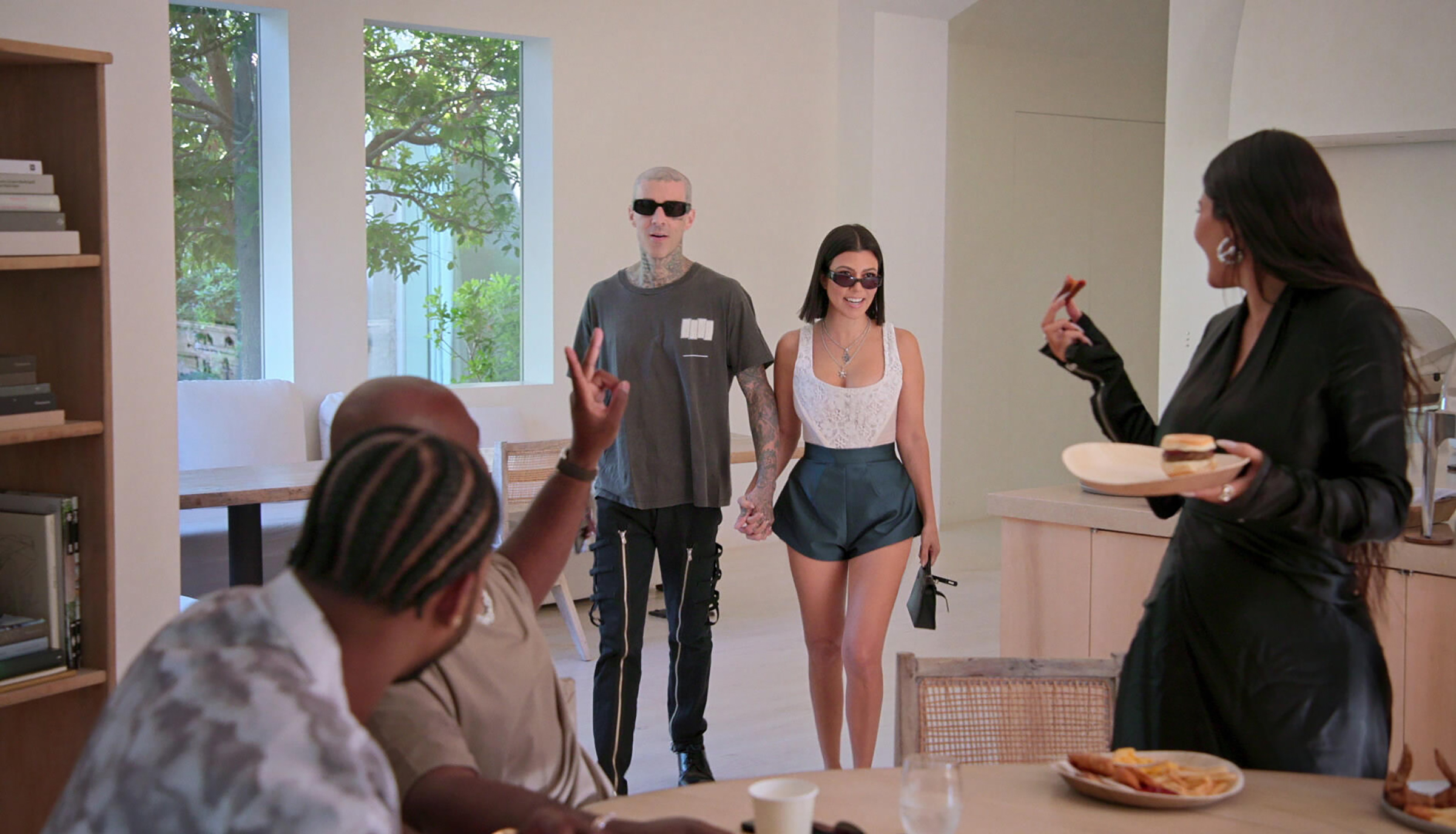
When it was announced in September 2020 that Keeping Up With the Kardashians would be ending after 20 seasons on E!, it seemed like the first family of reality television was finally done with the medium that catapulted them to celebrity status. Over 13 years, the Kardashian-Jenner family went from being fame-adjacent to bona fide stars, all while building a booming business empire. But less than two years later, following a lucrative content deal with Hulu for just under $100 million, the family is back in The Kardashians. Filled with similar versions of the prerequisite confessionals and carefully constructed family drama that defined Keeping Up, the Hulu series deviates little from its predecessor—though it is all filmed with the glow of a much higher production budget.
Perhaps it shouldn’t come as a surprise that the family that changed the face and scope of influencer marketing would return to reality TV, a platform that allows for endless free opportunities for showcasing the many brands that make up the Kardashian-Jenner business empire. The opening to The Kardashians, which premiered April 14, certainly makes that case. In a sweeping continuous shot that introduces the family, bouncing from sister to sister in the Calabasas Hills, nearly a third of the 3 minute intro is spent in the respective offices of Kylie Cosmetics and SKIMS, where the brands’ logos, operations, products (and proprietors) are shown to maximum effect. The opener is glossy, glorified product placement that sets the tone for the rest of the episode.
Each of the Kardashian-Jenner brands is referenced at least once in the hourlong premiere, from Kendall Jenner’s tequila brand, 818, to Kim Kardashian’s $3.2 billion shapewear line, SKIMS, which is casually dropped into conversation three times and appears five times via confessional outfits, show rooms, and Kim’s closet (in a particularly memorable scene, Kim cries amidst racks of only SKIMS in a giant closet). It’s the kind of subliminal marketing that most brands can only dream of.

“They’re getting paid for the show, but they’re leveraging that into getting free media,” says Krishna Subramanian, co-founder of the influencer marketing firm, Captiv8. According to Subramanian, the Kardashian-Jenner family’s return to reality TV is less a bid for influence than it is a savvy business move. He estimates that a 30-second mention of any of the family’s brands in an episode could be valued anywhere from $500,000 to $1.5 million (by comparison, when Kim Kardashian married Kris Humphries in 2011, ad spots for the wedding special were selling for $100,000 each).
This integrated, semi-incognito approach to shilling their products has been key to the success of the Kardashian-Jenner business model, which has long relied on the power of the family’s personal brands and their ability to connect with their fans and followers simply by selling themselves—perhaps most compellingly on television. While their collective Instagrams have garnered hundreds of millions of followers, it was Keeping Up With the Kardashians that gave viewers a seemingly unfiltered look at the family—their squabbles, their heartbreaks, their dramas, and their triumphs, all points of connection for their followers. You may not live in Calabasas, but if you’ve argued with your sister or broken up with a lover, you’ve shared something with the Kardashian-Jenner sisters.
“The Kardashians aren’t saying ‘go buy my product.’ They’re talking about it or giving you insight into how it’s built and all the nuances of it and then all of a sudden, you want to be a part of that, so you go out and make those purchases,” says Subramanian.
The appearance of authenticity is one of the main reasons consumers gravitate to certain influencers, Subramanian says. For the Kardashians, whose brand centered around the relatability of their family, maintaining an outlet for connecting in this way with their fans could also be key to why the family decided to return to get back in front of TV cameras.
“The minute you start having something that’s completely raw and unfiltered, you truly create an emotional connection with that audience and your consumers,” he says. “Consumers are more invested in what’s happening on a day-to-day basis and when they start to do that, they want to be a part of that journey—and being a part of that, is buying the product. The Kardashians are the OGs of this.”

While this unfiltered, authentic appearance was instrumental to the rise of the Kardashian-Jenners in pop culture, one can argue that their relatability has waned as they’ve amassed huge levels of fame and success, presenting a challenge to the very business model they’ve championed. Most recently, Kim Kardashian went viral for the wrong reasons when she admonished women in business to “get your f-cking ass up and work. It seems like nobody wants to work these days.” The misguided attempt at giving advice prompted swift backlash.
But Subramanian says that with a whole new season of The Kardashians ahead of us, there’s plenty of time for Kim to ingratiate herself again with her consumer base.
“Everyone loves a good comeback,” he says. “And Hulu’s given them the ability to become relatable all over again.”
More Must-Reads From TIME
- The 100 Most Influential People of 2024
- Coco Gauff Is Playing for Herself Now
- Scenes From Pro-Palestinian Encampments Across U.S. Universities
- 6 Compliments That Land Every Time
- If You're Dating Right Now , You're Brave: Column
- The AI That Could Heal a Divided Internet
- Fallout Is a Brilliant Model for the Future of Video Game Adaptations
- Want Weekly Recs on What to Watch, Read, and More? Sign Up for Worth Your Time
Write to Cady Lang at cady.lang@timemagazine.com